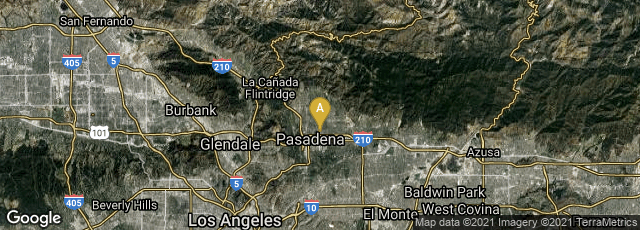

A: Pasadena, California, United States
In 1939 American chemist Linus Pauling issued his textbook The Nature of the Chemical Bond and the Structure of Molecules and Crystals: An Introduction to Modern Structural Chemistry. This set forth in detail his valence-bond theory based on the quantum-mechanical concept of resonance between two energy states, which led to his highly innovative idea that the hybridization of orbitals (electron waves) between atoms is what makes molecular structure possible. Pauling’s work “taught a couple of generations of chemists that the sizes and electrical charges of atoms determine exactly [emphasis mine] their arrangement in molecules” (Judson, The Eighth Day of Creation, p. 57); in biochemistry, it proved essential to understanding the helical structure of DNA and other complex proteins. Pauling was awarded the Nobel Prize for chemistry in 1954 for his research into the nature of the chemical bond.
"The Nature of the Chemical Bond was written in language that chemists could understand. Pauling purposely left out almost all mathematics and detailed derivations of bonds from quantum mechanics, concentrating instead on description and real-world examples. The book was filled with drawings and diagrams of molecules. It was, considering the breadth of its approach, amazingly readable.
"And it was vitally important. In it Pauling had, as Nobel Laureate Max Perutz later said, shown that "chemistry could be understood rather than being memorized."
"The response to its publication was immediate and enthusiastic. A letter Pauling received from a University of Illinois professor was typical: "I cannot refrain from taking the opportunity to express to you congratulations and my personal appreciation for one of the finest contributions to chemical literature that I have ever read."
"G. N. Lewis, to whom Pauling dedicated the book, wrote him, "I have just returned from a short vacation for which the only books I took were half a dozen detective stories and your ‘Chemical Bond.’ I found yours the most exciting of the lot."
"The book soon became a standard text at most of the nation’s leading universities. It would go through a number of new editions, be translated into French, Japanese, Russian, German and Spanish, and stay in print for almost three decades. It would become a Bible for a new generation of chemists and one of the most cited references in the history of science (http://scarc.library.oregonstate.edu/coll/pauling/bond/narrative/page47.html, accessed 01-16-2014).
Judson, The Eighth Day of Creation, 51-70. James, Nobel Laureates in Chemistry, 368-78; 422-26. Goertzel & Goertzel, Linus Pauling, 66-77.
In January 2014 a very comprehensive website on Pauling's work on the nature of the chemical bond, including his classic textbook, was available from Oregon State University at this link.